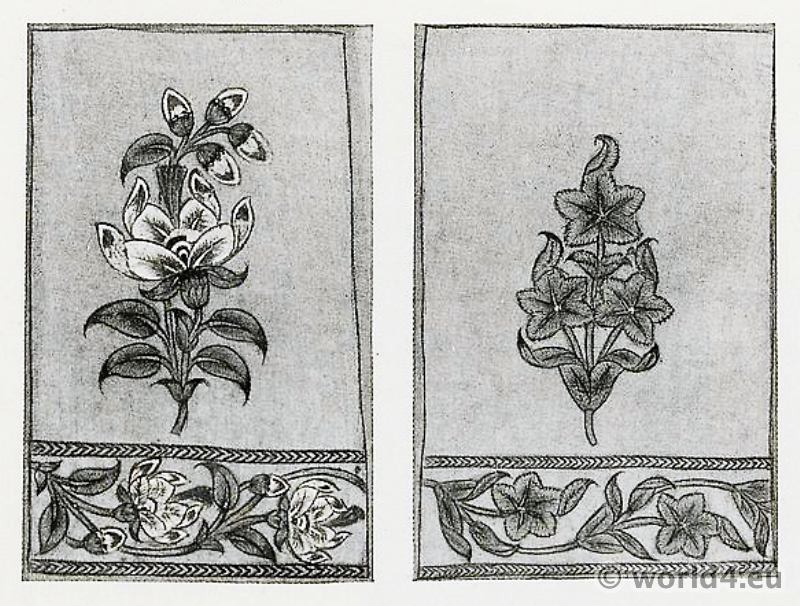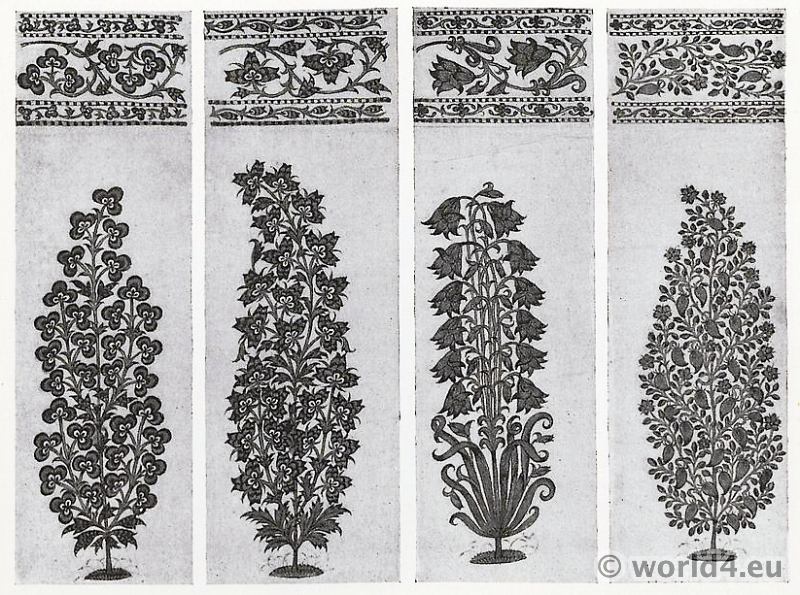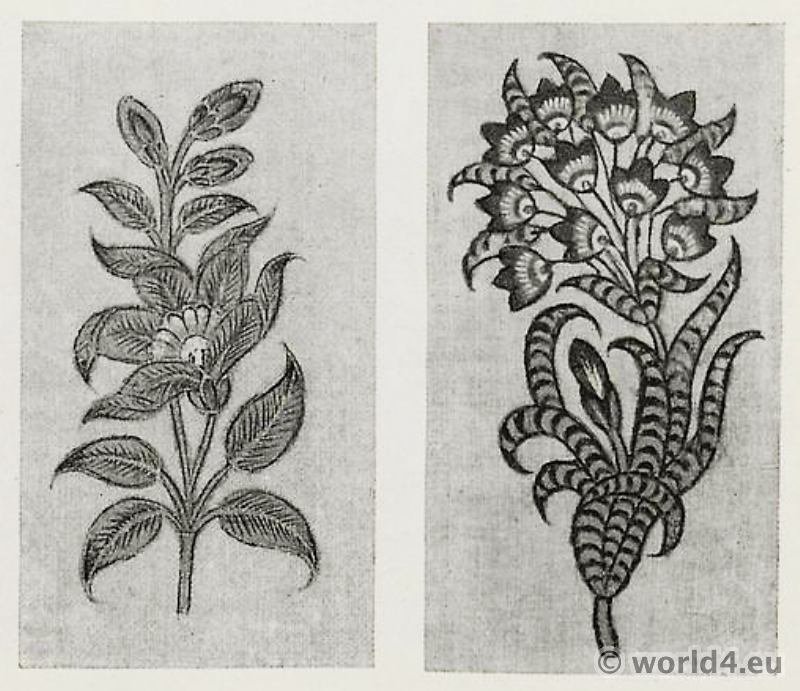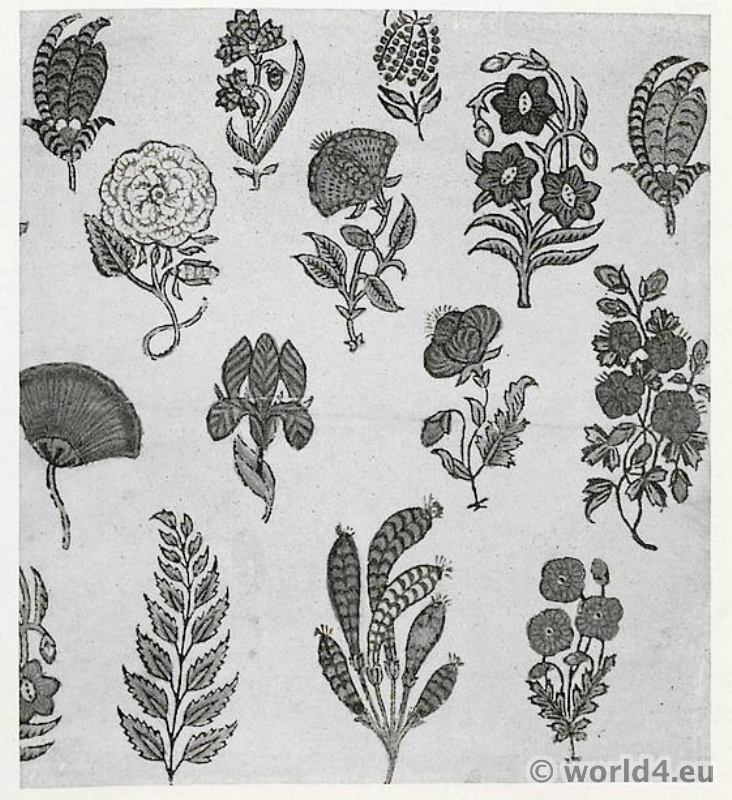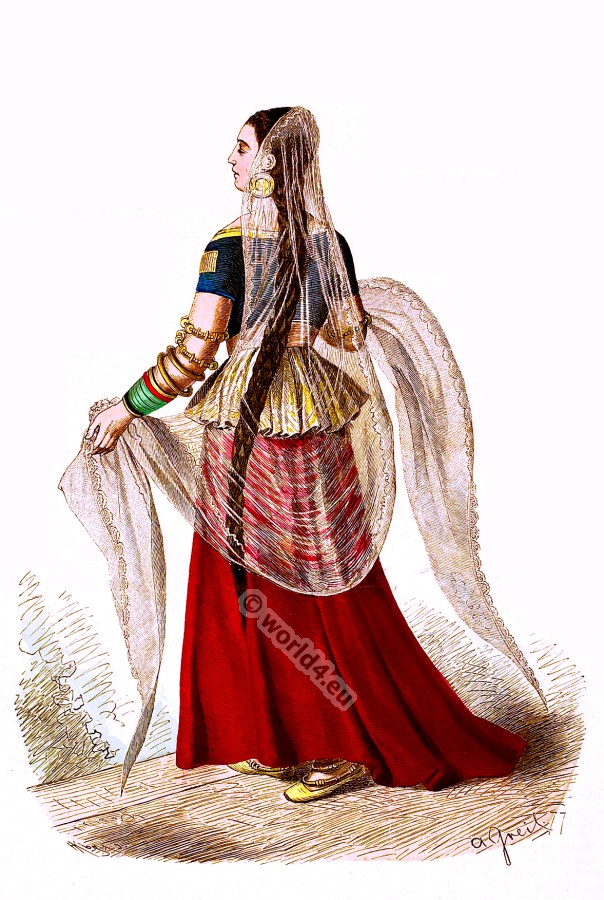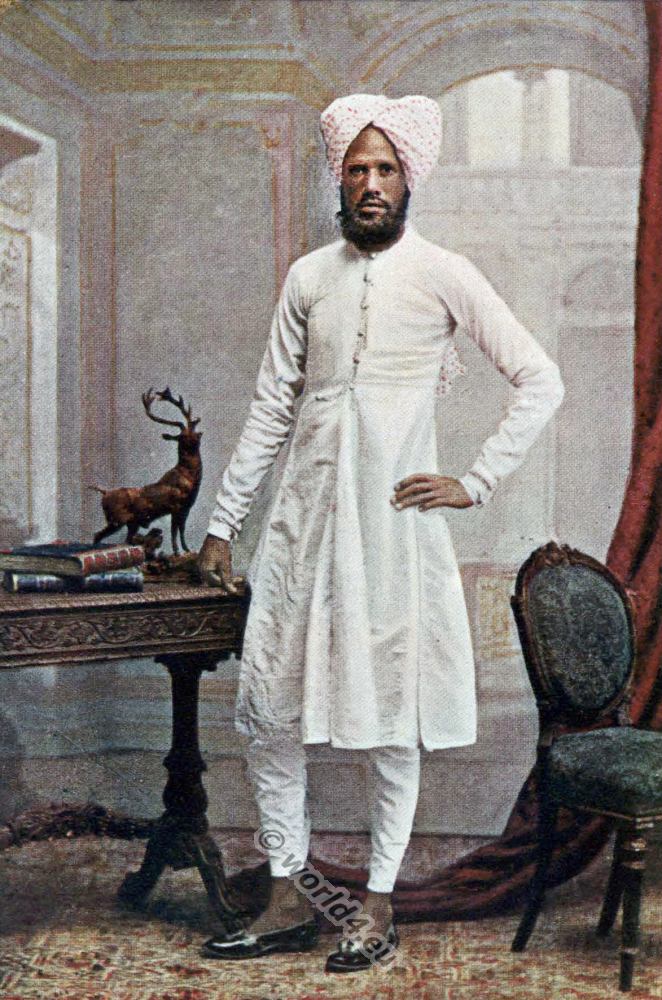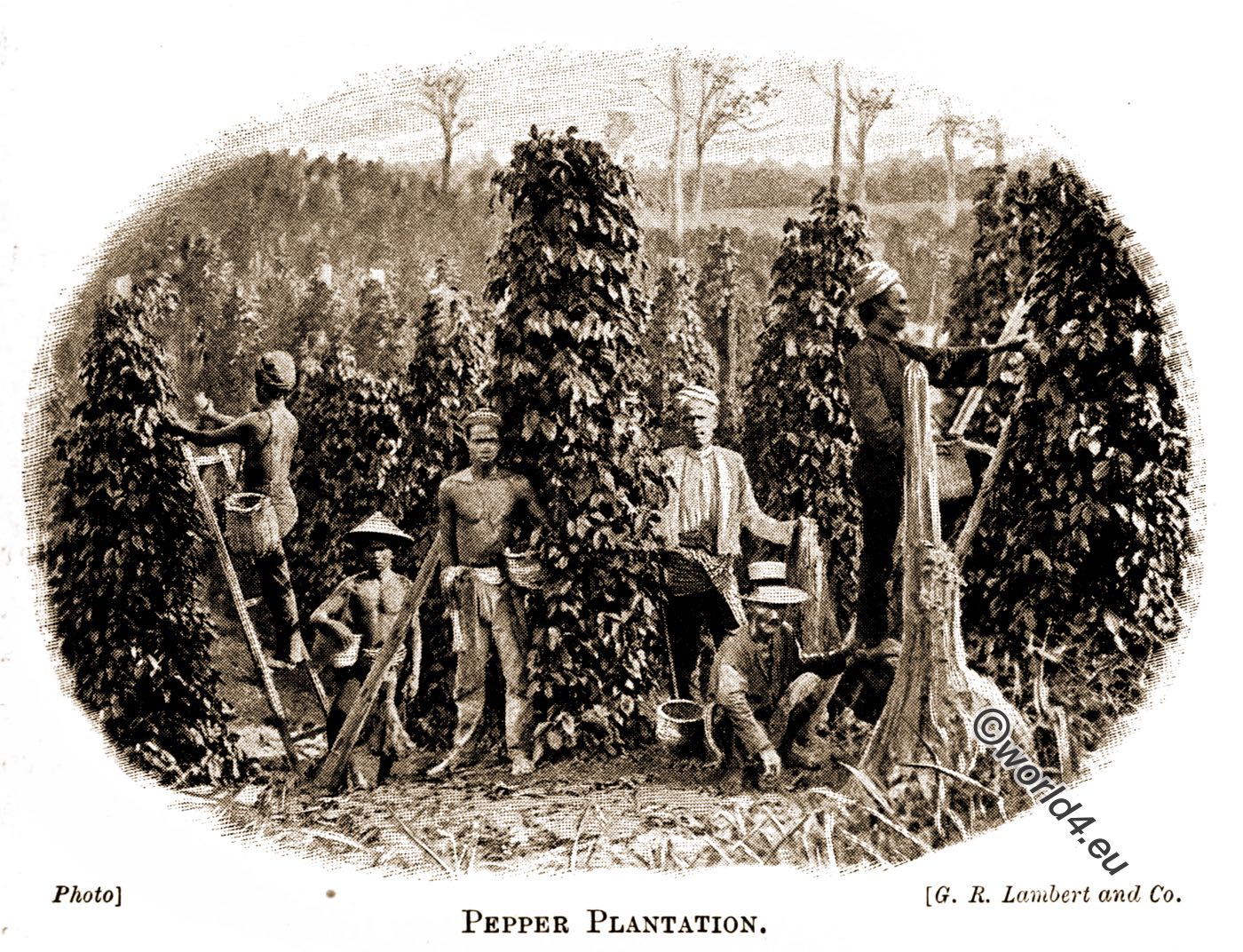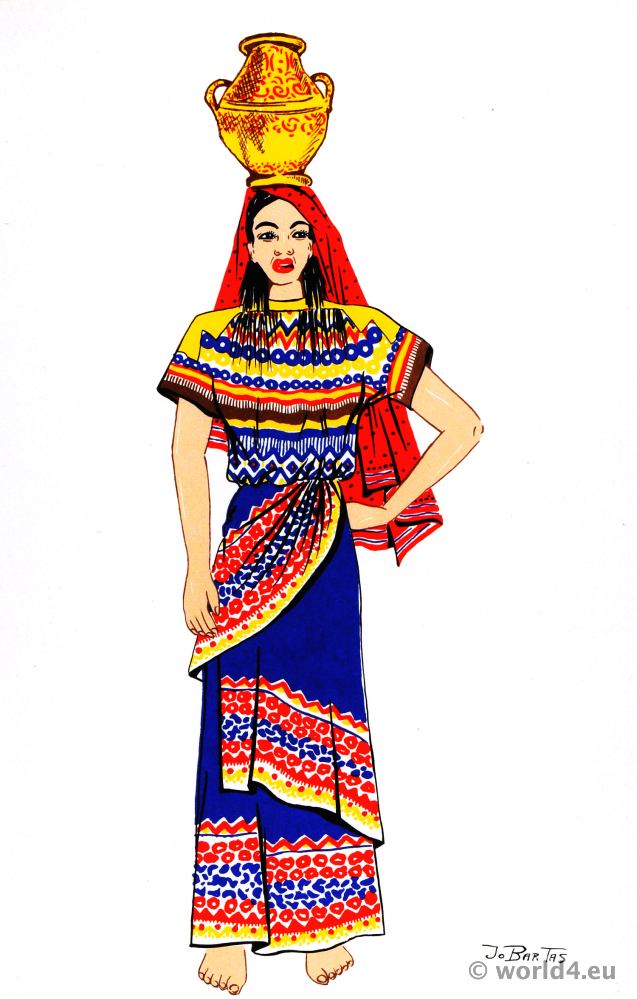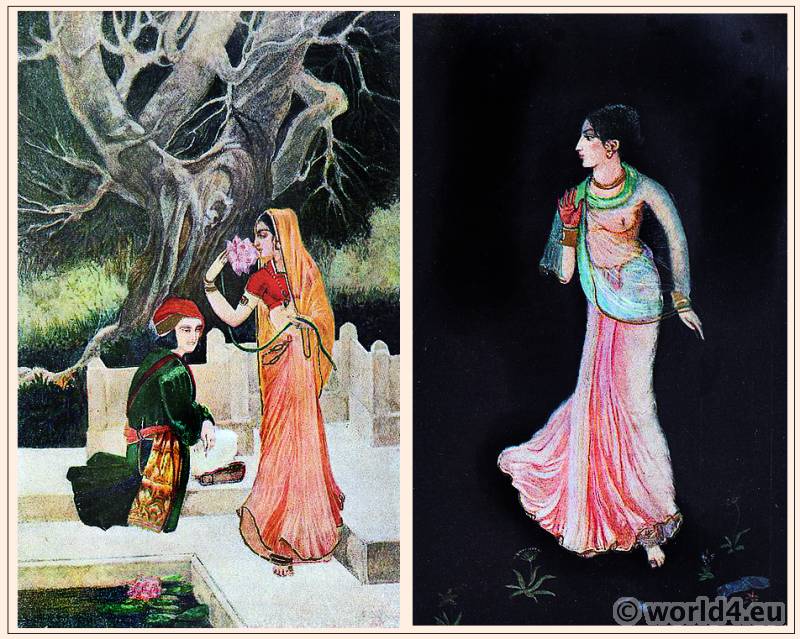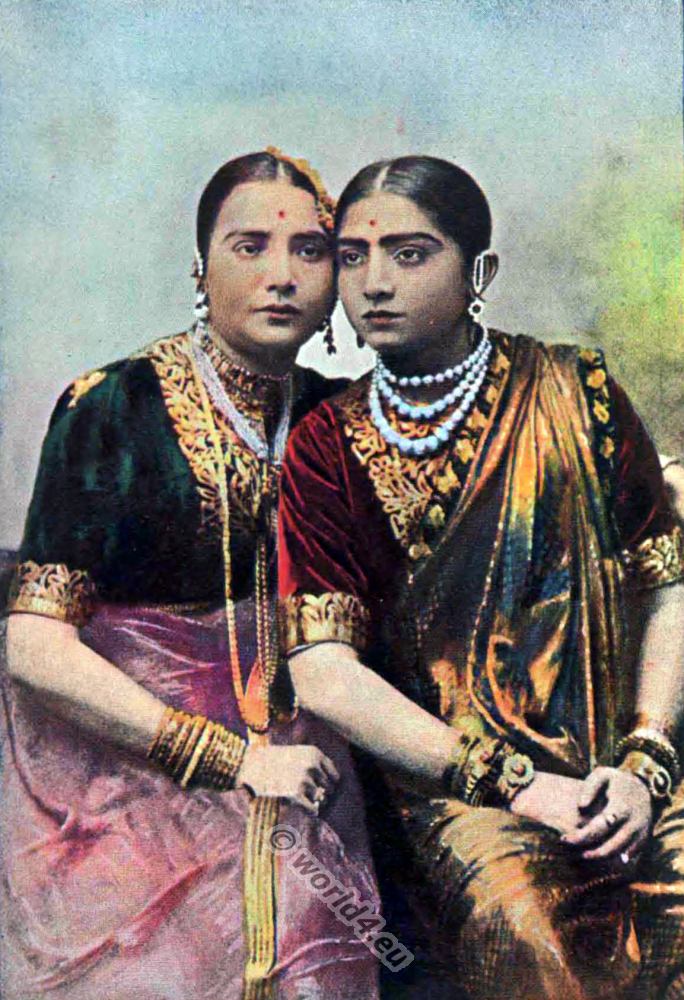Plant drawings from an Indian Cotton Printer’s Pattern Book, 1910.
Our English cotton trade was originally based on imitations of Indian fabrics, the importation of which was so alarmingly large that in the last year of the 17th century they were excluded by Act of Parliament. Since that time mechanical, chemical and electric science have surpassed oriental handiwork in technical perfection and facility of wholesale production.
The element of design, however—independent alike of mechanics and chemistry—is, from the point of view of this magazine, of no less vital importance. So its readers may find the reproductions here given of the work of an Indian nuqásh or designer, dating probably from the middle of the 18th century, of some interest, for if not of very great artistic importance, they are certainly good examples of Indian treatment of plant forms and authentic working drawings.
It is possible that this unnamed designer confined himself to working for cotton printers; but from what I know of the craft and its traditions, I think this unlikely. Obviously one facile draughtsman could keep a legion of block-cutters at work, and it is equally clear that the skill shown in the designs reproduced in colour is capable of a wider range of subject, especially in India, where a rigid uniformity of style and manner rules all subjects alike.
It is true that they are on muslin, but they are done with the ek bál ka qualm—brush of one hair—the excessively fine point on which the craft prides itself, and there are refinements ofline and tint, of which the blockcutter could take no account. Our last illustration shows, though reduced in size, the relative coarseness of the block-printed line. The drawing looked attractive, the block-cutter, wanting a job, assured the employer that he could render it perfectly, and if the latter was disappointed in the result, he only anticipated an experience to which employers all over the world are liable.
The nuqásh is, and I think always was, a designer of all work. He is still to the fore, though year by year he has fewer opportunities, and he must soon be “snowed under” by the modern profusion of photographic, pictorial and decorative work imported or of local production. He is no longer, as a matter of course, a “State servant” of an Indian Court, receiving an allowance which, though more honorific than substantial, conferred a sort of laureateship.
Lithography finds him some employment, but few amateurs of position now care for his illuminated romances, mythological pictures or historical portraits, carefully and elaborately wrought. The ladies of princely houses do not now employ him on tracing the embroideries which used to give them pocket money, while artificers concerned with ornament have learned by the stress of hard times to do without new designs—a fatally easy lesson when they serve the agents of an uninterested public, and not, as of old, an instructed patron or Court.
Writing in this place, there is no need to dwell on the feeling for plant character or decorative propriety of these modest designs, among which may be recognised the dianthus or maiden pink, the amaranth or cockscomb, the marigold and poppy, all dear to the Indian for ritual, economic or poetic reasons. At first sight they may suggest a resemblance to the admirable woodcuts in European 16th century herbals, but they make no pretence to accuracy. The nuqásh, in fact, does not, and, I think, never did, draw directly from nature. When it is suggested, I have observed his impulse is to put his model behind him, and glance at it furtively from time to time.
The reproductions are reduced, and the coloured examples do not include the hashiya or border composed of the larger flower, and usually printed with it as in the monochrome designs. The terminology of the craft is interesting as an indication of old and settled usage. Flower and border together, as in the last-mentioned illustration, are bel hashiya; the single flower is bel buti; a nosegay of assorted flowers, Persian fashion, is a guldasta; stripes or lengthwise arrangements of flowers are bel házi; while figures and inscriptions — often effective elements — are tahrir.
The designs are cut on the length of the wood grain, not as with us, on a cross section. Shisham, a hard, mahogany-like acacia, mulberry, mango, ebony and box are used for thappas or blocks. And, as some force is required to make a good impression, the printer’s right hand, which gives the thump, is protected by a leathern guard. When one thinks of the steam-driven, electro engraven cylinder of European textile printing, this little detail has, to my coloured drawings on muslin (full size) mind, an almost pathetic interest. Very few register marks are used, even when successive printings are wanted, and yet the results are so good that I have often thought there may be more in the half pious, half conventional ejaculations which bring in the mercy of God than a careless Briton is apt to think.
Source: Published by J. Lockwood Kipling. International studio 1910.
(J. Lockwood Kipling (1837 − 1911) was an English art teacher, illustrator, and museum curator, who spent most of his career in British India. He was the father of the author Rudyard Kipling.)
Discover more from World4 Costume Culture History
Subscribe to get the latest posts sent to your email.



